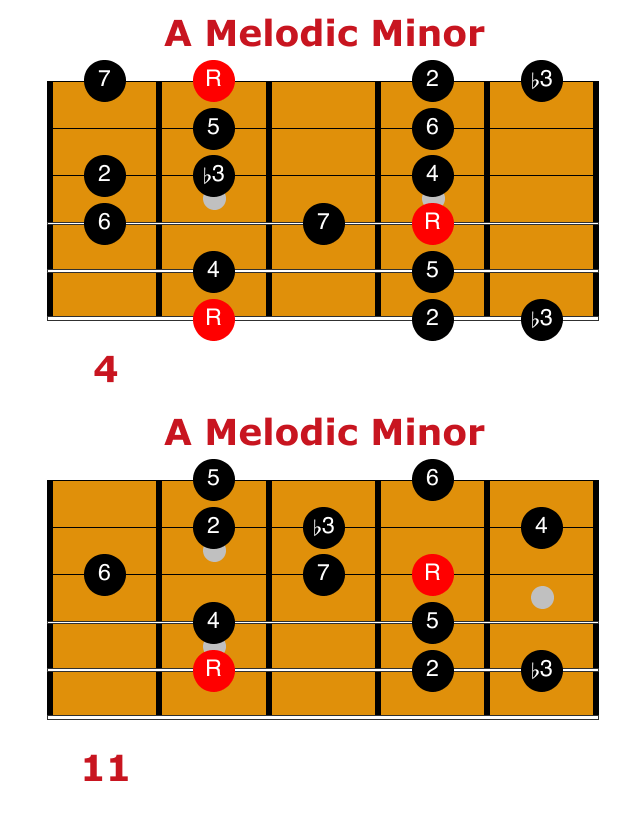Here’s a Quick Way to Solo With Melodic Minor
Melodic minor is one of the most important scale and scale system that any guitarist can learn and apply to their soloing.
This scale, and its related modes, bring new colors into your solos such as mMaj7, 13susb9, maj7#5, 7#11, and more.
While you know that melodic minor is important to learn, you may not know how to practice or apply this scale to your solos.
In this lesson, you learn how to play two must know positions of the melodic minor scale and apply it to the first 4 bars of a minor jazz-blues form.
I love this application of melodic minor because it allows you to add the mMaj7 and 7alt sounds to your solos and develop your melodic ideas.
By playing one idea over Am7, then repeating it or slightly altering it over A7alt, you create a continuity in your solos that helps connect with the listener.
It also allows you to play sophisticated jazz lines and solos over the minor blues without having to use a ton of material, one scale is all you need.
Have fun as you dig into melodic minor and use it in your solos over an A minor jazz blues progression.
Melodic Minor Fingerings
To begin, here are two essential melodic minor fingerings to learn, memorize, and prepare to use in your solos in the next section.
Learn the first shape from memory and work it with a metronome at different tempos and with different rhythms.
From there, head to the soloing workout below and solo over the minor blues with that first scale shape.
Then, come back here, learn the 2nd melodic minor scale shape and repeat that process.
As you work on these fingerings, here are a few things to keep in mind to get the most out of this workout in the practice room.
•Practice slowly, focus on clarity not speed.
•Memorize the fingers you use to play the notes.
•Memorize the shape, as finger numbers or notes.
•Work in 12 keys if possible.
•Add in different rhythms when working with a metronome.
•Sing along for added ear training.
Now that you know how to work these scale shapes, time to get them under your fingers, into your ears, and onto the fretboard.

Melodic Minor Soloing Workout
Now that you’ve learned or reviewed both positions of the melodic minor scale, you’re ready to take it to the backing tracks in your studies.
In this soloing workout you use one or both fingerings to solo over bars 1-4 of an A minor jazz blues.
Over the rest of the chords, you can use an Am blues scale, modes, arpeggios, or whichever device you choose.
Here’s a chart showing you how to add in the melodic minor scale in the first 4 bars, which I layout in the video lesson for this lesson.
Start with the slow backing track, then medium, and finally take it to the fast track as you expand on this concept in your solos.
Here are tips on how to get the most out of this soloing workout.
•Review 1 position of melodic minor.
•Solo over bars 1-3 with A MM.
•Add in Bb MM over bar 4.
•Leave space and use different rhythms in your lines.
•Sing along for ear training.
•Focus on repeating ideas over bars 1-4 in both scales.
•Review the 2nd MM position and repeat.
•Mix both positions together and repeat.
•Record your solos, listen back, analyze, take notes, improve.
Now that you know how to practice this melodic minor soloing exercise, time for the fun part, taking it to the fretboard!
Backing Track Slow
Backing Track Medium
Backing Track Fast

